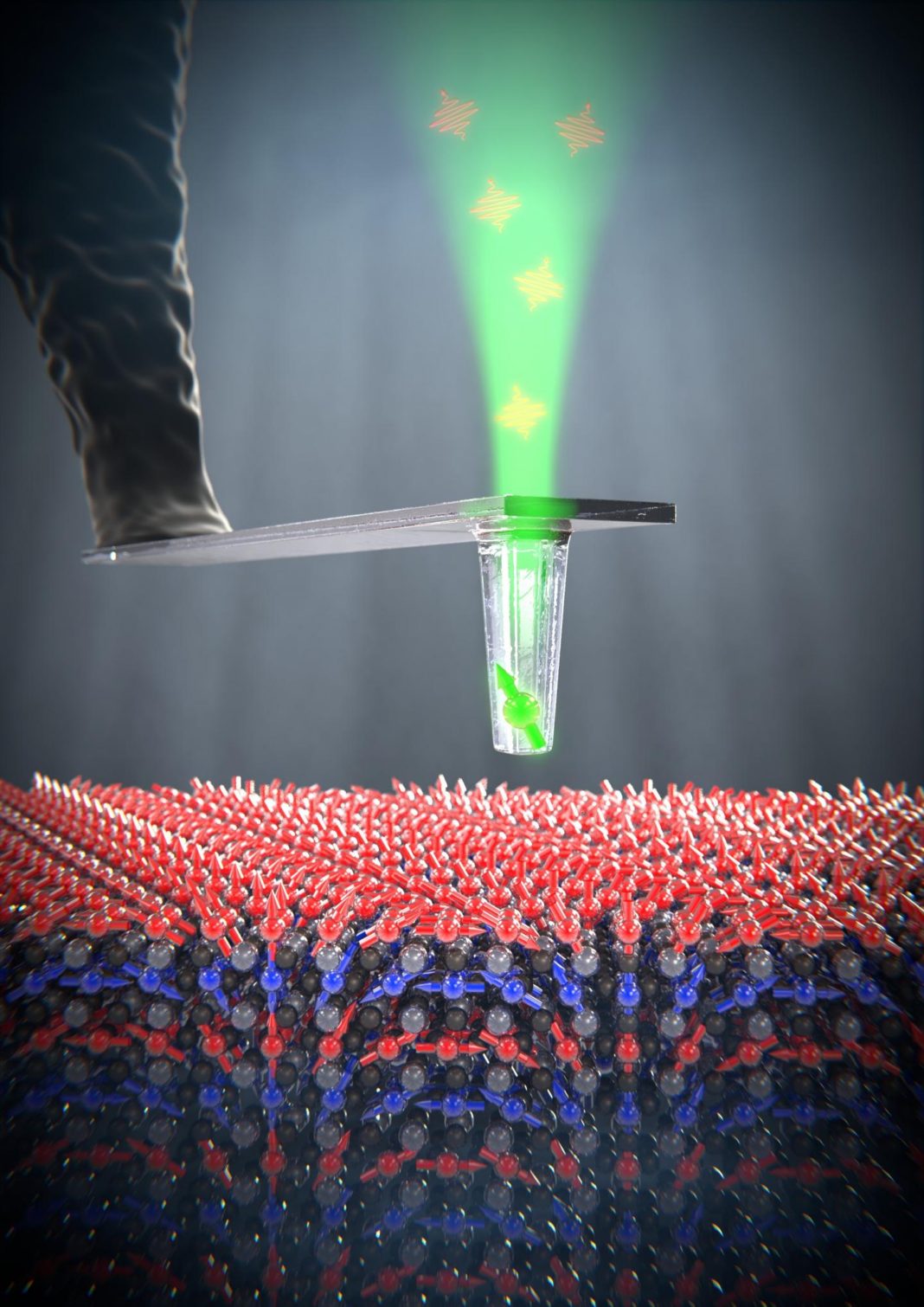It’s been an exciting time for physicists from the University of Basel‘s Department of Physics, the Swiss Nanoscience Institute, the University of Montpellier and University Paris-Saclay this month as for the first time ever they’ve managed to successfully image spiral magnetic ordering in a multiferroic material.
Multiferroic materials show great potential in being used for future data storage media as they simultaneously react to electric and magnetic fields, which is very rare. However, the combination of these two makes it possible to change the magnetic ordering of materials via electric fields. Using unique quantum sensors developed by experts at Basel University the researchers were able to prove their findings by analyzing the electromagnetic field.
Using multiferroic materials in data storage devices shows great potential as they can be used to create nanoscale magnetic storage media that’s able to be deciphered and modified using electric fields. This kind of magnetic media has many advantages including the fact that it uses very little power and operates at extremely high speeds. They could also be used in a new form of electronics called spintronics, where the electron’s spin is used in addition to electrical charge.
One example of a multiferroic material can be seen in that of bismuth ferrite. Even at room temperature, this material exhibits both electric and magnetic properties but until now there’s been no suitable method in which to represent magnetic ordering on the nanometer. Now, with thanks to a team led by Georg-H.-Endress Professor Patrick Malentinsky from the Swiss Nanoscience Institute and the University of Basel’s Department of Physics, diamond-based quantum sensors with a nitrogen center have been developed. This enabled the researchers to study the magnetic ordering of the bismuth ferrite film for the first time ever.
After completing their research, the team was able to successfully demonstrate how bismuth ferrite exhibits magnetic ordering, with two superimposed electron spins going in opposite directions while rotating in space. “Our diamond quantum sensors allow not only qualitative but quantitative analysis. This meant we were able to obtain a detailed picture of the spin configuration in multiferroics for the first time,” advised Malentinsky. The team is confident the results from the study will pave the way in new research efforts into these unique materials.
The quantum sensors used in the experiments consisted of two miniscule monocrystalline diamonds that have crystal lattices with a nitrogen atom next to a vacant center. The nitrogen vacant centers consist of orbiting electrons that are very sensitive to external magnetic and electric fields which enable to fields to be imaged. The quantum sensors were then used to obtain the magnetic measurements. To enable others to be able to benefit from them, Maletinsky set up a company called Qnami in 2016 in collaboration with Dr. Mathieu Munsch in which they readily produce these diamond sensors for others to use in research and industry applications.
More News to Read
- Researcher Discovered a New Way of Eco-Friendly Disposal for Data Security and Healthcare
- NASA’s Ocean Observation Reveals Sea-Level Fingerprints
- Chinese Scientists Create Device That Converts Blood Flow Energy into Electricity
- Researchers Revealed a New Clinically Tested Drugs that Inhibits the Growth of Tumours
- What Do You Think About Clothes that Grow With Your Child?











